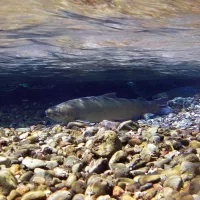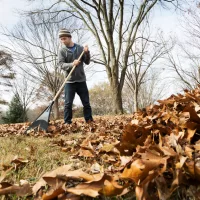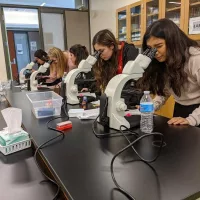
Climate change could pose a dual threat to native species by reducing their suitable habitats and increasing predation pressure from non-native species, a new study by Oregon State University researchers finds.
The effects of climate change and biological invasions on the geographical distribution of native species have been studied separately, but their combined effects remain overlooked, said Ivan Arismendi, an associate professor in Oregon State’s Department of Fisheries, Wildlife, and Conservation Sciences.
The new study, published in Global Change Biology, begins to change that. The researchers found that future climate conditions will reduce habitat suitability for native and non-native species, but an increase in habitat overlap might exacerbate the negative effects of non-native species, potentially leading to local extinctions of native species.
“Climate change and biological invasions are increasingly affecting ecosystems globally,” Arismendi said. “It’s critical to understand their combined impacts so that we can anticipate and adapt management strategies that account for shifting interactions between native and non-native species.”
Using ecological niche models, which are computational tools that use environmental data to predict where species live, Arismendi, Guillermo Giannico and Arif Jan developed a framework to assess how climate change influences the range of and habitat overlap among species.
For the study, they evaluated the invasion of non-native smallmouth bass and northern pike in the Pacific Northwest and their impact on native redband trout and bull trout. While they focused narrowly on those species, they noted that the model could be used to study other species and geographic regions.
They found that the distribution of suitable habitats for redband trout, bull trout, smallmouth bass and northern pike will undergo reductions under future climatic conditions, and this will be accompanied by these species shifting to higher elevation habitats, where the water is colder.
“Cold water refuges in upstream areas will serve as converging zones for native and non-native fishes,” said Jan, a doctoral student at Oregon State. “Past research has documented predatory interactions toward salmonids by smallmouth bass and northern pike where their habitat overlaps. This means potential year-round predation and competition pressures during the early life stages of salmonids.”
The researchers fear that this increased negative interaction could lead to local extinctions of native salmonids, similar to what has happened in southeastern Alaska and other parts of the world.
“This study highlights the need for integrated management strategies that address both direct and indirect effects of interactions among species,” said Giannico, a professor of fisheries at Oregon State. “Our approach is simple and cost-effective for prioritizing habitats for the early detection and monitoring of invasive species and their potential future impacts on native species.”















